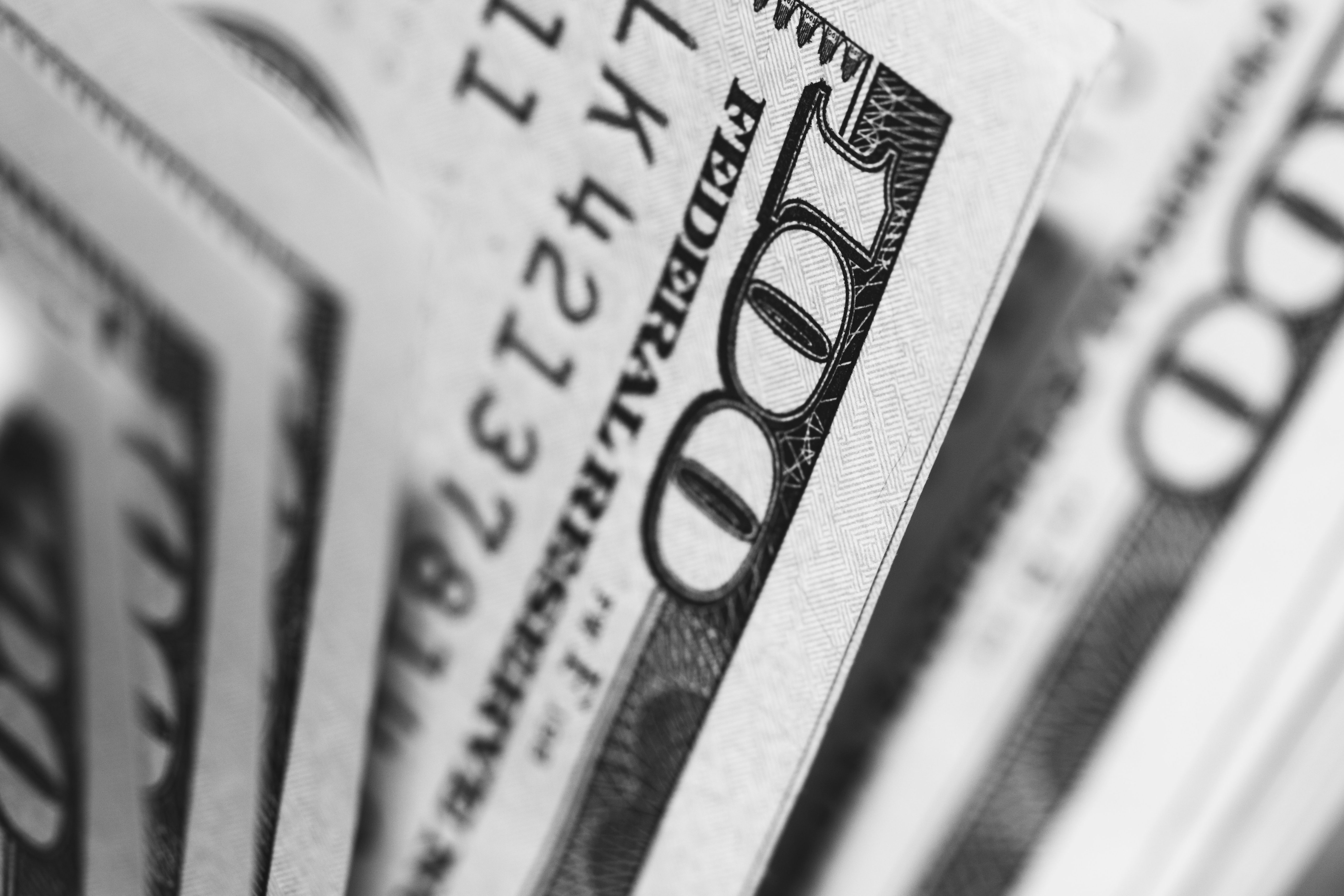Last Updated: May 11th, 2020 at 8:50 AM ET. Please see individual websites for further details about offers, including whether or not they have expired.
No one has proven more essential through the COVID-19 crisis than the medical professionals who are working on the frontlines of the pandemic. To recognize your heroic efforts, scores of companies across the nation are offering promotions as a way of giving back.
To make it a bit easier to know what is being offered to you, we’ve compiled a list of some of the available free and discounted goods and services, as well as other perks, and have posted it below.
Please note, this list is by no means complete. However, it is extensive, and we will continue to update it, as we come across new promotions and as promotions expire or reach their limit. If you are aware of a promotion not listed below, or if you discover that a promotion listed has expired, please email us by clicking here.
If you have any questions about a specific promotion, please direct those questions to the company offering the promotion. Thank you.
PPE
Mask Match — Free Masks
If you are a healthcare worker in need of a mask, Mask Match will try to connect you with someone who has masks to donate. Fill out the “I Need Masks” form to get started.
Learn More →
Apparel, Goods, and Services
Adidas — 40% Off
Adidas offers 15% off year-round for first responders and nurses. However, they have increased that discount program to 40% off during the COVID-19 crisis.
Learn More →
Big Lots — 15% Off
Big Lots is offering a 15% discount off everything for medical professionals, first responders, and active military/veterans. Just show your badge or work/military ID or use code BIGHEROES online. This offer is good through May 31st.
Learn More →
BJ’s Wholesale Club — Priority Access
BJ’s Wholesale Club, at all of its locations, will have an Appreciation Hour from 8:00 a.m. to 9:00 a.m. on Sundays for first responders and healthcare workers. During this designated time period, first responders and healthcare workers can shop in all of BJ’s locations without a membership.
Learn More →
Care.com — Free Premium Access
Care.com is providing one month of free, premium access to their site to support frontline medical workers who need help with finding care for their children, parents, and pets.
Learn More →
Clarks — 50% Off
Shoe manufacturer and retailer, Clarks, is offering a 50% discount for nurses and first responders. Limit one 50% off code per nurse or medical professional. Verify your ID through ID.me to receive the discount.
Learn More →
Costco — Priority Access
Costco is temporarily offering priority access to members who are healthcare workers and first responders, such as police officers, EMTs and firefighters. Just present your Costco membership card and official identification of your role to move to the front of the line.
Learn More →
Crocs — Free Crocs
Crocs is donating 10,000 shoes a day through their “Sharing a Pair for Healthcare” initiative. All you have to do is go to the Crocs website and get in line at 12:00 PM ET for each day’s giveaway.
Learn More →
Dearfoams — Free Slippers — Limit Reached/Giveaway Expired
Dearfoams is giving away free slippers to healthcare workers, and has also committed to donating 100,000 face masks to healthcare heroes.
Learn More →
Dollar General — In-Store Discount
Dollar General is offering an in-store discount of an unspecified amount to all medical personnel, first responders, and activated National Guardsmen. Just present your employer badge or ID. It was previously announced that the discount would be 10%, and may be more or less at this time.
Learn More →
Dr. Scholl’s — Free Insoles
Dr. Scholl’s is donating 100,000 pairs of Dr. Scholl’s Massaging Gel Work insoles to healthcare workers across the country, totaling a $1.3 million donation. Hospitals can email coronavirus.outreach@drscholls.com to submit a request for their medical staff.
Learn More →
Food Network — Free Access
Food Network is giving healthcare professionals 1 year of free access to their app, Food Network Kitchen, which offers step-by-step cooking tutorials, as well as commercial-free access to Food Network shows.
Learn More →
Home Shopping Network — 15% Off
Home Shopping Network is offering nurses 15% off any single item on HSN.com. Exclusions apply. Coupon valid through December 31st, 2020.
Learn More →
Jansport — 50% Off
Jansport, the maker of backpacks, bags, and accessories, is offering 50% for medical professionals and first responders. This offer is valid through June 30th, 2020.
Learn More →
Nike — 20% Off
For a limited time, Nike has increased their first responder and medical professional discount from 10% to 20%. Doctors, nurses, technicians, medical researchers, EMTs, firefighters, law enforcement, and more are eligible for the discount.
Learn More →
The North Face — 50% Off
From April 14, 2020 to December 31, 2020 The North Face will be giving a 50% discount to healthcare workers in the U.S. This discount can be used for the purchase of non-sale items on their website and at The North Face-owned retail stores in the United States.
Learn More →
Publix — Priority Access
First responders and hospital staff will be permitted to shop in Publix and access in-store pharmacies an hour after closing to the general public on Thursday evenings, from 8:00 until 9:00 PM, and an hour before opening to the general public on Friday mornings, from 7:00 until 8:00 AM until further notice.
Learn More →
Reebok — 50% Off
Reebok has increased their longstanding company discount to first responders and educators to 50% off. All nurses, military members, educators and first responders can shop 50% off at Reebok.com with no exceptions during this time.
Learn More →
Sam’s Club — Priority Access
Beginning April 19th, Sam’s Club is offering priority access to members who are healthcare workers and first responders during their “Hero Hours,” which are special shopping hours on Sundays from 8:00 AM to 10:00 AM.
Learn More →
Samsung — Up to 30% Off/Free Repairs
Samsung has extended their employee discount to all first responders and their families, which includes free repairs for Samsung phones, as well as up to 30% off products.
Learn More →
Tide — Free Laundry Services
Tide is offering free laundry services and dry cleaning to the families (defined as ‘next of kin’ e.g. same household/address) of frontline responders including nurses, doctors, paramedics, hospital/medical staff, medical researchers, police officers, and firefighters. The offer is good in participating cities through May 9.
Learn More →
Under Armour — 40% Off
Under Armour is recognizing those on the front lines by offering a 40% off discount for military members, first responders, health care workers and teachers. Just choose ‘Military and First Responder Discount’ at checkout to get your discount.
Learn More →
YETI — 20% Off
YETI, maker of coolers, drinkware, bags, and more, is offering a 20% discount to medical professionals and first responders. Verify your ID to receive the discount. Some restrictions apply.
Learn More →
Food & Beverages
Circle K — Free Coffee, Tea, or Fountain Drink — Limit Reached/Giveaway Expired
First responders and health care workers can get a free coffee, tea, or Polar Pop Fountain Drink when they show an ID through April 30.
Learn More →
DoorDash — Free or Discounted Delivery
DoorDash, the food delivery app, is actively partnering with hospitals in the U.S. and Canada to provide free access to Corporate DashPass. Every doctor, nurse, and hospital employee from partnering hospitals will receive at least 60 days of free DashPass, which eliminates or reduces delivery fees from local restaurants.
Learn More →
Dunkin’ — Free Coffee and Donut — Limit Reached/Giveaway Expired
On the first day of National Nurses Week, Wednesday, May 6, Dunkin’ is offering a free medium hot or iced coffee and a free donut to all healthcare workers who visit participating Dunkin’ restaurants nationwide, while supplies last. Not purchase necessary. Excludes Cold Brew and Nitro Cold Brew, Limit 1 per guest. Not valid on mobile orders.
Learn More →
Hooters — 20% Off
Hospital workers, first responders, and military personnel get 20% off at Hooters. Show your work ID for curbside pickup orders, or for online orders choose the “Pay at Store” option.
Learn More →
IHOP — 20% Off
Get 20% off your entire check if you’re a medical, law enforcement, military, and firefighter professional. All you need to do is mention the offer when you call in your order to IHOP. Then, show your official ID when you pick up your order.
Learn More →
Krispy Kreme — Free Dozen Donuts
Every Monday, Krispy Kreme is giving free dozens of their iconic Original Glazed® Doughnuts to healthcare workers. Just go to a Krispy Kreme drive-thru, tell them what you need, and show your employer badgeLimit five dozen per healthcare worker. Valid until May 12.
Learn More →
Little Caesars Pizza — Free Pizzas
Little Caesars Pizza will be donating and delivering a million pizzas to healthcare workers and first responders in the U.S. in the next few weeks. Starting April 13, customers can also “Pie it Forward” and donate a pizza to their local hospital, police station, or fire station via the Little Caesars app.
Learn More →
McDonald’s — Free Meal — Limit Reached/Giveaway Expired
Participating McDonald’s locations will provide the option of a free Thank You Meal to first responders and healthcare workers, valid all day and night between April 22nd and May 5th. Frontline workers, including healthcare professionals, can order these meals via the drive thru or the McDonald’s app and will be asked to show their ID badge during the pick-up process.
Learn More →
Nando’s PERi-PERi — Free Meals
The fast-casual chicken restaurant, which has locations in Illinois, D.C., Maryland, and Virginia, is providing free meals to anyone with a valid hospital ID. Limited to one meal per day while supplies last. Valid through May 17th, 2020.
Learn More →
Racetrac — Free Small Coffee or Fountain Drink — Limit Reached/Giveaway Expired
Racetrac is offering all essential workers, who are either wearing their uniform and/or have valid ID, a free small coffee or small fountain drink now through April 30. Limit one per person per day.
Learn More →
Starbucks — Free Hot or Cold Tall Brewed Coffee — Limit Reached/Giveaway Expired
Starbucks has announced that “any customer who identifies as a first responder or front-line worker supporting our healthcare system” can get a free hot or cold tall brewed coffee on each visit through May 3.
Learn More →
Thistle — 10% Off
Thistle, a ready-to-eat, food delivery service, is offering 10% off all deliveries to healthcare workers through May. Use code HOSPITALHEROES at checkout or reach out to hello@thistle.co for more details.
Learn More →
Tropical Smoothie Cafe — Free Smoothies
Medical professionals and first responders can contact their local Tropical Smoothie shop to have free smoothies delivered to your team.
Learn More →
Wawa — Free Coffee
Wawa, which has locations in Pennsylvania, New Jersey, Maryland, Delaware, Virginia, Florida, and Washington D.C., is offering free coffee to healthcare workers and first responders for the length of the Coronavirus pandemic.
Learn More →
White Castle — Free Castle Combo or Breakfast Combo — Limit Reached/Giveaway Expired
White Castle is offering a free Castle Combo or breakfast combo to healthcare workers and EMTs, valid through the end of April. This is good for drive-thru only and you must show ID to receive the offer.
Learn More →
Health & Wellness
Down Dog — Free Access
Down Dog is offering all of its apps, including Down Dog, Yoga for Beginners, HIIT, Barre, and 7 Minute Workout, completely free for nurses, doctors, and other healthcare professionals through July 1.
Learn More →
Headspace — Free Access
Headspace is offering free access to its meditation app through 2020 for anyone working in a public health setting.
Learn More →
Neurocore Counseling — Free Telehealth Counseling
Neurocore Counseling is offering free telehealth counseling to medical personnel and first responders through May 1 or longer.
Learn More →
Training Mate — Free Streaming Workouts
The LA-based gym is offering a free month of streaming workouts for frontline healthcare professionals.
Learn More →
Lodging, Travel, Transportation
Airbnb — No Fees
Find a frontline stay specially prepared for first responders through Airbnb, with the company waiving fees for the first 100k stays booked through their COVID-19 relief program.
Learn More →
BP/Amoco — $.50 Off Per Gallon of Gasoline
The gas station chain is offering a discount of 50 cents off per gallon for first responders and health care workers the next time they fill up at BP or Amoco gas stations in the US.
Learn More →
Choice Hotels — Discounted Hotel Rates
Choice Hotels is offering a “Choice Cares” special rate for nurses, doctors, paramedics, firefighters, food/agriculture workers, transit employees, and others outlined by CISA guidelines. Up to 9 nights can be booked with the special rate.
Learn More →
Hilton Hotels — Free and Discounted Hotel Rates
Hilton Hotels, in partnership with American Express, will donate up to 1 million hotel room nights across the United States to frontline medical professionals leading the fight against COVID-19. They will make rooms available without charge to doctors, nurses, EMTs, paramedics and other frontline medical staff who need a place to sleep, recharge, or isolate from their families through the end of May.
Learn More →
Honda Motor Company — $500 Off
Honda is offering nurses and other healthcare professionals $500 savings toward any 2019 or newer model year Honda when they finance or lease with Honda Financial Services®. Available until July 6, 2020.
Learn More →
Marriott Bonvoy — Free and Discounted Hotel Rates
Marriott Bonvoy, in collaboration with American Express and JPMorgan Chase, has started a new initiative called Rooms for Responders which will provide $10 million in hotel stays for doctors and nurses leading the fight against COVID-19. They also offer their Community Caregiver Program, which provides significantly discounted rates for first responders and healthcare professionals who want to book rooms at hotels near the hospitals where they work.
Learn More →
Red Roof Inn — 15-20% Off
Travel nurses with valid ID can get 20% off their stay at Red Roof Inn when they book online or call 1-800-733-7663. Discounts are also available to members of Advantage RN (20% off) and Emergency Nurses Association (15% off).
Learn More →
Sixt Rent a Car — 5% Off
Sixt Rent a Car is offering a 5% discount on car rentals to doctors and other medical staff. Bring valid ID when you pick up your vehicle.
Learn More →
Uber — Free Transportation
Uber Health is providing free transportation for frontline healthcare workers, helping them get to and from patients’ homes, as well as between healthcare facilities. They are also providing free meals on Uber Eats to first responders and healthcare workers in US and Canada, in coordination with local, state, and provincial governments.
Learn More →
Disclaimer: The viewpoint expressed in this article is the opinion of the author and is not necessarily the viewpoint of the owners or employees at Healthcare Staffing Innovations, LLC.









